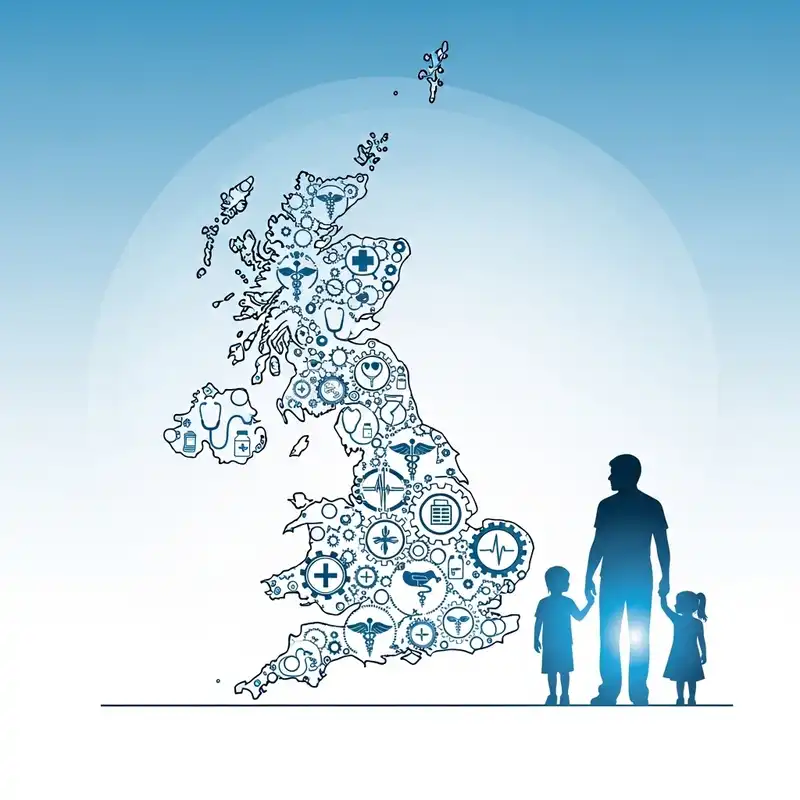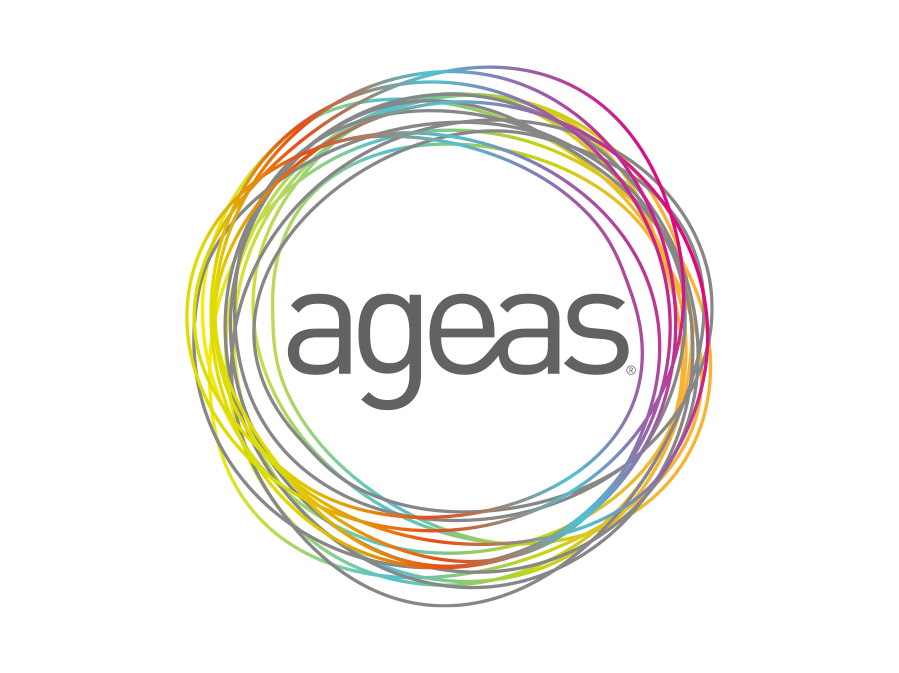Anti-Fragile Living

Beyond Survival: Discover How Proactive Protection – From Tailored Income Cover for Every Profession (Including Trades) to Private Health Access – Is Your Blueprint for Personal Growth, Enabling You to Thrive, Not Just Survive, Even When Life Throws Its Toughest Challenges, Like the Projected 1-in-2 Cancer Diagnosis Risk.
In a world of constant change and unforeseen challenges, we often talk about resilience—the ability to bounce back from adversity. But what if there was a more powerful, more proactive approach? What if, instead of merely recovering from life's shocks, you could emerge from them stronger, more capable, and with a clearer sense of purpose?
This is the essence of anti-fragile living.
Coined by author Nassim Nicholas Taleb, "anti-fragility" is the property of systems that thrive and grow when exposed to volatility, randomness, and stressors. Think of a bone that heals stronger after a fracture, or muscles that grow after the stress of a workout. The fragile shatters under pressure, the resilient returns to its original state, but the anti-fragile evolves.
This concept is not just an abstract philosophy; it is a practical blueprint for navigating modern life. The stark reality, underscored by projections from Cancer Research UK that 1 in 2 people in the UK born after 1960 will be diagnosed with some form of cancer in their lifetime, is that significant life shocks are not a matter of if, but when.
An anti-fragile life is one built on a foundation of proactive protection. It's about creating a system where a health crisis or a sudden loss of income becomes a catalyst for re-evaluation and growth, not a trigger for financial ruin and personal despair. This guide will show you how to construct that system, moving beyond the fragile mindset of "just surviving" to the empowering reality of thriving, no matter what comes your way.
The Modern Challenge: Why 'Just Getting By' Is a Fragile Strategy
For many in the UK, the financial footing feels increasingly precarious. The strategy of "just getting by" – meeting monthly bills with little left over – is inherently fragile. It leaves no room for error, no buffer against the unexpected.
Consider the key pressures facing households today:
- The Cost of Living: Persistent inflation means that even if your income stays the same, its purchasing power diminishes, squeezing your budget tighter each month.
- Evolving Work Landscape: The rise of the gig economy and short-term contracts means less job security and fewer of the traditional benefits, like comprehensive sick pay, that once provided a safety net.
- Strained State Support: While the welfare state provides a crucial backstop, it is not designed to replace a full-time income. As of 2024/25, Statutory Sick Pay (SSP) is just £116.75 per week, payable for up to 28 weeks.
To put that into perspective, the Office for National Statistics (ONS) reports that the average weekly household expenditure in the UK is significantly higher. Relying solely on SSP would create an immediate and severe financial crisis for most families.
| Financial Element | Average Weekly Figure (UK) | Statutory Sick Pay (SSP) | The Weekly Shortfall |
|---|---|---|---|
| Household Spending | £528 (ONS, financial year ending 2023) | £116.75 | -£411.25 |
| Mortgage/Rent | Highly variable, but often £200-£400+ | £116.75 | Potentially a total shortfall |
| Food & Drink | £70-£90 | £116.75 | Barely covered, if at all |
This table illustrates a stark truth: the state safety net, while essential, is a lifeline, not a lifeboat. It might keep you afloat, but it won’t get you to shore. This is the definition of a fragile existence – one major illness away from financial collapse.
Furthermore, the NHS, our cherished national institution, is under unprecedented strain. The latest data from NHS England reveals millions are on referral-to-treatment waiting lists, with many waiting over 18 weeks for consultant-led care. This isn't just an inconvenience; it's a prolonged period of uncertainty, pain, and anxiety that can prevent you from working and living your life fully.
An anti-fragile approach acknowledges these realities and builds a private, robust system to counteract them.
The First Pillar of Anti-Fragility: Securing Your Income
Your most valuable asset isn't your house or your car; it's your ability to earn an income. It powers everything else. Protecting it is the foundational step in building an anti-fragile life. This is where Income Protection (IP) insurance becomes indispensable.
Income Protection is a policy that pays you a regular, tax-free monthly income if you are unable to work due to any illness or injury. It's designed to replace a significant portion of your lost earnings, allowing you to continue paying your mortgage, bills, and living expenses while you focus entirely on your recovery.
Unlike Critical Illness Cover, which pays a one-off lump sum for a specific condition, Income Protection can pay out for a much wider range of issues – from a cancer diagnosis to severe back pain or a mental health condition like stress or depression – for as long as you are unable to work, potentially right up to retirement age.
The key to its power is its flexibility. A robust IP plan can be tailored to fit your specific profession and circumstances.
Tailored Income Cover for Every Profession
| Profession | Key Challenge | The Income Protection Solution |
|---|---|---|
| Employed Professional (e.g., Accountant, Manager) | Employer sick pay is often limited (e.g., 3-6 months full pay). | An IP policy with a 6-month deferred period kicks in just as employer pay stops, creating a seamless financial bridge. |
| Self-Employed / Freelancer (e.g., Writer, Consultant) | Zero sick pay. No work means no income, instantly. | IP is a non-negotiable. A policy with a shorter deferred period (e.g., 4 or 13 weeks) provides a rapid safety net. |
| Company Director | Personal and business finances are intertwined. An illness impacts both. | Executive Income Protection is a highly tax-efficient solution paid for by the company as a business expense. It protects the director's income while being cost-effective for the business. |
| Tradesperson (e.g., Electrician, Plumber, Builder) | High risk of physical injury. A broken bone can mean months off work. | Personal Sick Pay policies are specifically designed for manual roles. They often offer short 1-day or 1-week deferment periods and cover you for 12 or 24 months, providing crucial short-term support. |
By securing your income, you remove the primary source of stress that accompanies a health crisis. You are no longer forced to ask, "How will I pay the bills?" Instead, you can ask, "What do I need to do to get better?" This shift in focus is the first step towards turning a setback into a period of genuine recovery and growth.
The Second Pillar: Defending Against Life's Gravest Shocks with Critical Illness Cover
While Income Protection shields your monthly cash flow, Critical Illness Cover (CIC) provides the firepower to handle a life-altering diagnosis. Returning to that sobering statistic – 1 in 2 people developing cancer in their lifetime – a proactive plan becomes less of a luxury and more of a necessity.
Critical Illness Cover pays out a tax-free lump sum if you are diagnosed with one of a list of predefined serious conditions. The "big three" covered by almost all policies are:
- Cancer (of a specified severity)
- Heart Attack
- Stroke
However, comprehensive policies today can cover over 50 conditions, including multiple sclerosis, motor neurone disease, major organ transplant, and permanent paralysis.
How a CIC Payout Creates Anti-Fragility
The power of this lump sum lies in the options and control it gives you at a time when you feel most powerless. It's a capital injection that allows you to reshape your life on your own terms.
Imagine the possibilities:
- Eliminate Debt: Pay off your mortgage and other major loans, instantly removing the largest financial burden from your life.
- Fund Private Treatment: Access cutting-edge drugs or therapies not yet available on the NHS, or simply avoid waiting lists to get the best possible care, fast.
- Adapt Your Home: Make necessary modifications, such as installing a stairlift or creating a downstairs bedroom, to live comfortably during and after treatment.
- Replace a Partner's Income: Allow your partner to take time off work to become your full-time carer without financial penalty.
- Create Breathing Space: Give yourself a one or two-year "sabbatical" from work to recover fully, without the pressure of needing to return to a 9-to-5 job before you're ready. This could be a time to retrain, start a less stressful business, or simply be with your family.
This is the anti-fragile outcome. The shock of the diagnosis is met with a powerful financial resource that enables you not just to survive the treatment, but to build a better, more sustainable life afterwards.
Navigating the world of CIC can be complex, as policy definitions and the number of conditions covered vary significantly between insurers. This is where working with an expert brokerage like WeCovr is invaluable. We can compare policies from all the major UK providers, demystifying the jargon and ensuring you get a plan that offers genuinely comprehensive cover for your needs.
The Third Pillar: Accelerating Recovery with Private Medical Insurance
The UK is rightly proud of the NHS. It provides excellent care to millions. However, the system is facing unprecedented demand, leading to significant waiting times for diagnosis and treatment. According to the latest NHS England statistics, there are over 7.5 million cases on the referral-to-treatment waiting list.
These delays are more than just numbers on a spreadsheet. They represent weeks and months of pain, worry, and uncertainty. This prolonged period of waiting is a fragile state; it saps your mental energy and can worsen your physical condition.
Private Medical Insurance (PMI) is the anti-fragile alternative. It provides a parallel path to faster healthcare, giving you prompt access to specialists, diagnostic tests, and treatment.
The Core Benefits of PMI:
- Speed of Access: Bypass NHS waiting lists for consultations, scans (like MRI and CT), and surgery. A diagnosis that could take months via the NHS might be confirmed within weeks or even days.
- Choice and Control: You can often choose the specialist who treats you and the hospital where you receive your care.
- Enhanced Comfort: Treatment is usually in a private hospital with your own room, en-suite facilities, and more flexible visiting hours.
- Access to Specialist Treatments: PMI policies can provide access to new drugs or treatments that have been approved for use but are not yet funded by the NHS.
The anti-fragile advantage is clear: by minimising the time between feeling unwell and getting treated, you dramatically shorten the period of disruption to your life. A swift diagnosis reduces anxiety, and rapid treatment accelerates your return to health, work, and family life. You spend less time being a patient and more time living your life.
Building a Legacy: Life Insurance as the Ultimate Safety Net
The final layer of an anti-fragile financial plan addresses the ultimate "what if". Life insurance is not for you, but for the people you leave behind. It ensures that your ambition to provide for them continues even after you're gone, making your family's future anti-fragile.
There are several forms of life cover, each serving a distinct purpose.
| Type of Life Cover | How It Works | Best For... |
|---|---|---|
| Life Protection (Term Assurance) | Pays a lump sum if you die within a set term. Decreasing term is designed to clear a repayment mortgage, while level term provides a fixed sum for your family. | Protecting a mortgage and providing a general financial cushion for dependents. The cornerstone of family protection. |
| Family Income Benefit | Instead of a lump sum, it pays out a regular, tax-free monthly or annual income until the end of the policy term. | Families with young children. It replaces your lost income in a manageable way, making budgeting simpler for a grieving partner. Often more affordable than a large lump sum policy. |
| Gift Inter Vivos Insurance | A specialist policy to cover Inheritance Tax (IHT). If you gift a large sum of money or an asset, it can be liable for IHT if you die within 7 years. This policy pays the tax bill. | Individuals planning their estate and making large lifetime gifts. It protects the value of the gift for the recipient, ensuring your generosity isn't eroded by tax. |
An anti-fragile legacy is one that is planned and secured. It ensures that a personal tragedy for your family does not also become a financial one. It provides them with the stability and resources to grieve, readjust, and continue their lives without the added burden of financial hardship.
The Business Owner's Blueprint for Anti-Fragility
For company directors, the self-employed, and business owners, the concept of anti-fragility extends beyond personal finances to the business itself. A key person's illness or death can be a catastrophic shock to a small or medium-sized enterprise. Proactive business protection makes the company itself anti-fragile.
| Business Protection | Purpose | The Anti-Fragile Outcome |
|---|---|---|
| Key Person Insurance | The business takes out a policy on a crucial employee (e.g., a top salesperson, a technical genius). If that person dies or suffers a critical illness, the policy pays a lump sum to the business. | The payout gives the business working capital to recruit a replacement, cover lost profits, reassure lenders, and maintain client confidence. The business survives the shock and continues. |
| Executive Income Protection | As mentioned earlier, this is IP paid for by the business for a director or employee. It's an allowable business expense, making it highly tax-efficient. | The director's income is protected without drawing on personal funds. The business retains a key leader, and the cost is tax-deductible, strengthening the company's financial position. |
| Relevant Life Cover | A tax-efficient, company-paid death-in-service benefit for an employee or director. The payout goes directly to their family, free of most taxes. | A high-value employee benefit that aids retention. The payout doesn't count towards the employee's lifetime pension allowance and is not typically subject to IHT, providing maximum value to the family. |
By insulating your business from personal shocks, you create a more stable, resilient, and ultimately anti-fragile enterprise that can weather storms and continue to provide for you, your employees, and your family.
Beyond Insurance: The Lifestyle Habits of an Anti-Fragile Individual
A robust insurance portfolio is your financial armour. But true anti-fragility is also about strengthening your mind and body to better withstand life's pressures. A healthy lifestyle is your first line of defence, reducing your risk of illness and improving your ability to recover when you do get sick.
The synergy is powerful: having financial protection in place removes the background anxiety of "what if," giving you the peace of mind to focus on these positive, life-enhancing habits.
- Proactive Nutrition: Food is fuel for your body's defence systems. A balanced diet rich in whole foods, lean proteins, and vegetables can bolster your immune system and reduce inflammation. Rather than falling into restrictive diets, focus on mindful, sustainable eating. As part of our commitment to our clients' holistic wellbeing, WeCovr provides complimentary access to our AI-powered nutrition app, CalorieHero, helping you take control of your diet in a simple and effective way.
- Consistent Movement: You don't need to be a marathon runner. Regular, moderate exercise—a brisk walk, a cycle ride, a swim—is proven to reduce the risk of heart disease, type 2 diabetes, and some cancers. It's also one of the most powerful anti-depressants available, boosting your mood and mental resilience.
- Prioritising Sleep: Sleep is not a luxury; it is a critical biological function. During sleep, your body repairs cells, consolidates memories, and regulates hormones. Consistently getting 7-9 hours of quality sleep is fundamental to both physical and mental health.
- Mental Fortitude: Anti-fragility is as much about mindset as it is about money. Cultivate mental wellness through practices like mindfulness, maintaining strong social connections, and pursuing hobbies that bring you joy and a sense of purpose. This builds the mental reserves needed to cope with stress when it inevitably arrives.
Putting It All Together: Your Personal Anti-Fragile Action Plan
Building an anti-fragile life is a journey, not a destination. It's about taking deliberate, thoughtful steps to create a system that protects you and allows you to grow. Here's how to start.
Step 1: Audit Your Fragility Be honest with yourself. Where are your vulnerabilities?
- What is your employer's sick pay policy? How long would it last?
- How much do you have in accessible emergency savings? How many months' expenses would it cover?
- Who depends on your income? What would happen to them if it stopped?
- Does your business have a plan to cope if you or a key colleague were out of action for six months?
Step 2: Prioritise Your Protection You don't have to fix everything at once. Start with the foundation.
- Protect Your Income: This is almost always the first priority. Without an income, all other plans fail.
- Defend Against Catastrophe: Next, consider Critical Illness Cover to handle the financial fallout of a major diagnosis.
- Secure Your Legacy: Ensure your family is protected with appropriate Life Insurance.
- Accelerate Your Health: Look at Private Medical Insurance to bypass waiting lists and get back on your feet faster.
Step 3: Seek Expert Guidance The world of protection insurance is complex, with hundreds of products and dozens of providers. It's not a DIY task. An expert adviser is your guide. At WeCovr, our role is to understand your unique situation—your job, your family, your finances, your goals—and search the entire market to build a tailored, affordable protection portfolio just for you. We translate the small print and compare the critical details that make the difference at claim time.
Step 4: Review and Adapt Your anti-fragile plan is not static. It must evolve with your life. Plan an annual review with your adviser to adjust your cover as your circumstances change—a marriage, a new baby, a bigger mortgage, a new business venture. This ensures your protection remains perfectly aligned with your life.
By taking these steps, you transform insurance from a grudge purchase into a strategic investment in your future. It's the ultimate act of empowerment, giving you the freedom and confidence to pursue your goals, take calculated risks, and live a bigger, bolder life, secure in the knowledge that you have a system in place not just to survive the storms, but to sail through them stronger than before.
What’s the difference between Income Protection and Critical Illness Cover?
I'm young and healthy. Do I really need this type of insurance?
What if I have a pre-existing medical condition?
Is Executive Income Protection complicated to set up for my business?
Why can't I just rely on state benefits and the NHS?
Why life insurance and how does it work?
What is Life Insurance?
Life insurance is an insurance policy that can provide financial support for your loved ones when you or your joint policy holder passes away. It can help clear any outstanding debts, such as a mortgage, and cover your family's living and other expenses such costs of education, so your family can continue to pay bills and living expenses. In addition to life insurance, insurance providers offer related products such as income protection and critical illness, which we will touch upon below.How does it work?
Life insurance pays out if you die. The payout can be in the form of a lump sum payment or can be paid as a replacement for a regular income. It's your decision how much cover you'd like to take based on your financial resources and how much you'd like to leave to your family to help them deal with any outstanding debts and living expenses. Your premium depends on a number of factors, including your occupation, health and other criteria.The payout amount can change over time or can be fixed. A level term or whole of life policy offers a fixed payout. A decreasing term policy offers a payout that decreases over the term of the cover.
With critical illness policies, a payout is made if you’re diagnosed with a terminal illness with a remaining life expectancy of less than 12 months. While income protection policies ensure you can continue to meet your financial commitments if you are forced to take an extended break from work. If you can’t work because you’ve had an accident, fallen sick, or lost your job through no fault of your own, income protection insurance pays you an agreed portion of your salary each month.
Income protection is particularly helpful for people in dangerous occupations who want to be sure their mortgage will always be covered. Income protection only covers events beyond your control: you’re much less likely to be covered if you’re fired from your job or if you injure yourself deliberately.
Questions to ask yourself regarding life insurance
Just ask yourself:👉 Who would pay your mortgage or rent if you were to pass away or fall seriously ill?
👉 Who would pay for your family’s food, clothing, study fees or lifestyle?
👉 Who would provide for the costs of your funeral or clear your debts?
👉 Who would pay for your costs if you're unable to work due to serious illness or disability?
Many families don’t realise that life, income protection and critical illness insurance is one of the most effective ways to protect their finances. A great insurance policy can cover costs, protect a family from inheriting debts and even pay off a mortgage.
Many would think that the costs for all the benefits provided by life insurance, income protection insurance or critical illness insurance are too high, but the great news is in the current market policies are actually very inexpensive.
Benefits offered by income protection, life and critical illness insurance
Life insurance, income protection and critical illness insurance are indispensable for every family because a child loses a parent every 22 minutes in the UK, while every single day tragically 60 people suffer major injuries on the UK roads. Some people become unable to work because of sickness or disability.Life insurance cover pays out a lump sum to your family, loved ones or whomever you choose to get the money. This can be used to secure the financial future of your loved ones meaning they would not have to struggle financially in the event of your death.
If it's a critical illness cover, the payout happens sooner - upon diagnosis of a serious illness, disability or medical condition, easing the financial hardship such an event inevitably brings.
Income protection insurance can be very important for anyone who relies on a pay check to cover their living costs, but it's especially important if you’re self-employed or own a small business, where your employment and income is a bit less stable. It pays a regular income if you can't work because of sickness or disability and continues until you return to paid work or you retire.
In a world where 1 in 4 of us would struggle financially after just four weeks without work, the stark reality hits hard – a mere 7% of UK adults possess the vital shield of income protection. The urgency of safeguarding our financial well-being has never been more palpable.
Let's face it – relying on savings isn't a solution for everyone. Almost 25% of people have no savings at all, and a whopping 50% have £1,000 or less tucked away. Even more concerning, 51% of Brits – that's a huge 27 million people – wouldn't last more than one month living off their savings. That's a 10% increase from 2022.
And don't even think about state benefits being a safety net. The maximum you can expect from statutory sick pay is a mere £109.40 per week for up to 28 weeks. Not exactly a financial lifeline, right?
Now, let's tackle a common objection: "But I have critical illness insurance. I don't need income protection too." Here's the deal – the two policies apply to very different situations. In a nutshell:
- Critical illness insurance pays a single lump sum if you're diagnosed with or undergo surgery for a specified potentially life-threatening illness. It's great for handling big one-off expenses or debts.
- Income protection, on the other hand, pays a percentage of your salary as a regular payment if you can't work due to illness or injury. It's the superhero that tackles those relentless monthly bills.
Types of life insurance policies
Common reasons for getting a life insurance policy are to:✅ Leave behind an amount of money to keep your family comfortable
✅ Protect the family home and pay off the mortgage in full or in part
✅ Pay for funeral costs
Starting from as little as a couple of pounds per week, you can do all that with a Life Policy.
Level Term Life Insurance
One of the simplest forms of life insurance, level term life insurance works by selecting a length of time for which you would want to be covered and then deciding how much you would like your loved ones to receive should the worst happen. Should your life insurance policy pay out to your family, it would be in a lump sum amount that can be used in whatever way the beneficiary may wish.
Decreasing Term Life Insurance
Decreasing term life insurance works in the same way as level term, except the lump sum payment amount upon death decreases with time. The common use for decreasing term life cover is to protect against mortgage repayment as the lump sum decreases along with the principal of the mortgage itself.
Increasing Term Life Insurance
Increasing term life insurance aims to pay out a cash sum growing each year if the worst happens while covered by the policy. With increasing term life cover amount insured increases annually by a fixed amount for the length of the policy. This can protect your policy's value against inflation, which could be advantageous if you’re looking to maintain your loved ones’ living standards, continue paying off your mortgage in line with its repayment schedule and cover your children’s education fees.
Whole of Life Insurance
Whereas term life insurance policies only pay out if you pass away during their term, whole of life insurance pays out to your beneficiaries whenever this should happen. The most common uses for whole life insurance are to cover the costs of a funeral or as a vehicle for your family's inheritance tax planning.
Family Income Benefit
Family income benefit is a somewhat lesser-known product in the family of life insurance products. Paying out a set amount every month of year to your beneficiaries, it is the most cost-effective way of maintaining your family's living standards to an age where you'd expect them to be able to support themselves financially. The most common use would be for a family with children who are not working yet so are unable to take care of themselves financially.
Relevant Life Insurance
Relevant Life Insurance is a tax-efficient policy for a director or single employee. A simple level term life insurance product, it is placed in a specific trust to ensure its tax efficiency. The premiums are tax deductible and any benefit payable should a claim arise is also paid out tax free, which makes it an attractive product for entrepreneurs and their businesses.
Important Fact!
We can look at a more suitable option mid-term!
Why is it important to get life insurance early?
👉 Many people are very thankful that they had their life, income protection, and critical illness insurance cover in place before running into some serious issues. Critical illness and income protection insurance is as important as life insurance for protecting your family's finances.👉 We insure our cars, houses, bicycles and even bags! Yet our life and health are the most precious things we have.
Easily one of the most important insurance purchases an individual or family can make in their lifetime, the decision to buy life, income protection, critical illness and private medical health insurance can be made much simpler with the help of FCA-authorised advisers. They are the specialists who do the searching and analysis helping people choose between various types of life insurance policies available in the market, including income protection, critical illness and other types of policies most suitable to the client's individual circumstances.
It certainly won't do any harm if you speak with one of our experienced FCA-authorised insurance partner experts who are passionate about advising people on financial matters related to life insurance and are keen to provide you with a free consultation.
You can discuss with them in detail what affordable life, income protection, critical illness or private medical health insurance plan for the necessary peace of mind they would recommend! WeCovr works with some of the best advisers in the market.
By tapping the button below, you can book a free call with them in less than 30 seconds right now:
Our Group Is Proud To Have Issued 800,000+ Policies!
We've established collaboration agreements with leading insurance groups to create tailored coverage
























How It Works
1. Complete a brief form

2. Our experts analyse your information and find you best quotes

3. Enjoy your protection!

Any questions?
Learn more

Who Are WeCovr?
WeCovr is an insurance specialist for people valuing their peace of mind and a great service.👍 WeCovr will help you get your private medical insurance, life insurance, critical illness insurance and others in no time thanks to our wonderful super-friendly experts ready to assist you every step of the way.
Just a quick and simple form and an easy conversation with one of our experts and your valuable insurance policy is in place for that needed peace of mind!